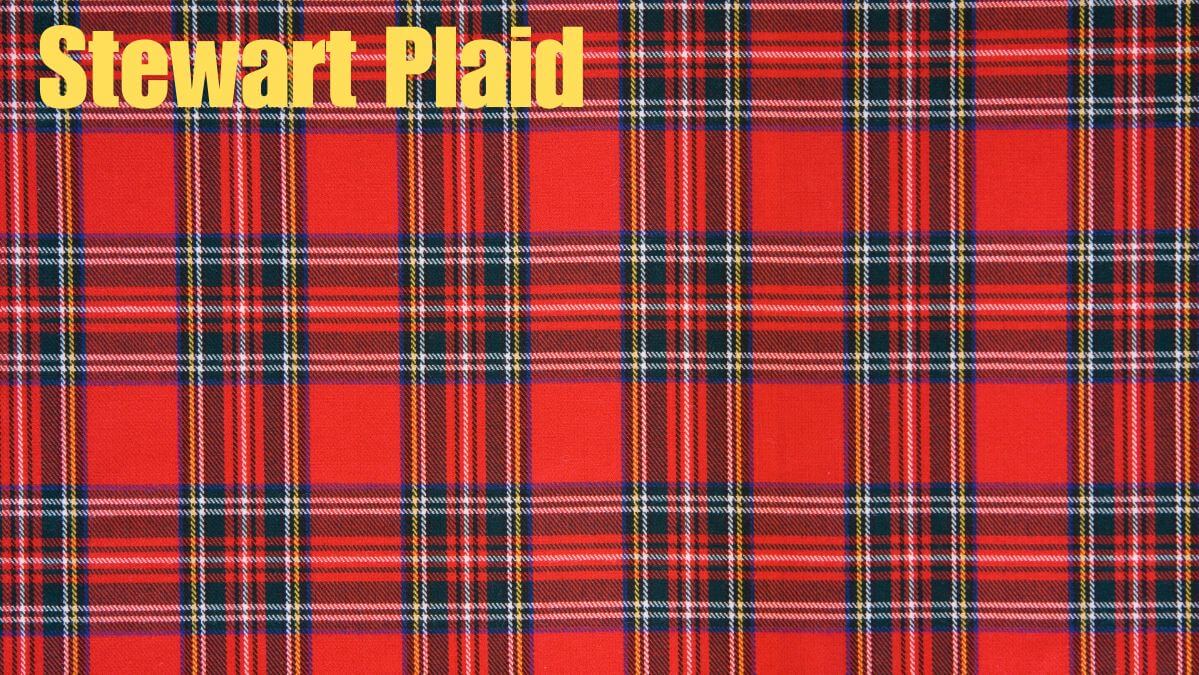Introduction to Stewart Plaid
Stewart Plaid is more than just a pattern; it’s a tapestry woven with history, culture, and identity. This iconic design captures the spirit of Scotland, connecting us to centuries of tradition while remaining stylishly relevant today. Whether on kilts or in modern fashion pieces, Stewart Plaid has left an indelible mark across various realms. Curious about how this timeless tartan came to be? Join us as we delve into the origins and evolution of Stewart Plaid and discover why it continues to capture hearts around the globe.
The Origins of Stewart Plaid
Stewart Plaid traces its roots back to the 13th century in Scotland. This distinctive tartan is associated with the Stewart clan, one of the most prominent families in Scottish history.
Initially, plaid patterns served practical purposes. They were woven from wool and designed for warmth and durability against harsh weather conditions. The vibrant colors emerged later as a reflection of regional identity.
The design features alternating bands of color that create a striking visual impact. These hues often represent various aspects of nature or folklore significant to the clan’s heritage.
As clans began to solidify their identities, unique tartans became symbols of pride and unity. Stewart Plaid stands out among them due to its rich history intertwined with royal lineage and cultural significance.
Today, it celebrates not just familial ties but also a broader connection to Scotland’s storied past.
The Influence of Scottish Clans on the Pattern
Scottish clans have played a pivotal role in shaping the Stewart Plaid pattern. Each clan developed its own distinct tartan, serving as both an emblem of identity and pride. The colors and designs often reflected local landscapes or significant historical events.
The Stewarts were one of Scotland’s most influential families, their plaid becoming synonymous with heritage. This particular pattern features rich hues like deep greens and vibrant reds, embodying a sense of tradition that resonates through generations.
As clans battled for territory and honor, these patterns became markers of loyalty. Wearing a specific tartan indicated allegiance to one’s clan during times of strife.
Even today, the influence persists in modern fashion trends where the spirit of Scottish heritage is celebrated through various adaptations of Stewart Plaid. This connection between fabric and legacy continues to captivate those who appreciate authentic style rooted in history.
Also Read: Where Can Find Black and White Ducks?
Famous Uses of Stewart Plaid
Stewart Plaid has graced the wardrobes of many iconic figures throughout history. From Scottish nobility to modern-day celebrities, its rich hues and intricate patterns speak volumes.
One notable instance is its association with Sir Walter Scott. His literary works often romanticized the Scottish Highlands, bringing Stewart Plaid into the spotlight as a symbol of heritage and pride.
In fashion, it’s been embraced by designers like Ralph Lauren, who incorporated this classic tartan into his collections. The timeless motif adds a touch of elegance to both casual and formal wear.
Hollywood hasn’t shied away from its charm either. Movies set in Scotland frequently showcase characters dressed in Stewart Plaid, solidifying its status as an emblem of culture.
From runways to red carpets, Stewart Plaid continues to inspire trends while paying homage to its storied past.
Evolution of Stewart Plaid in Fashion
Stewart Plaid has seen a fascinating evolution in the fashion world. Initially worn by Scottish clans, this distinctive pattern transitioned into mainstream attire over centuries.
The Industrial Revolution sparked interest in tartans among the upper class, leading to their incorporation into formal wear. By the 20th century, designers began experimenting with Stewart Plaid, infusing it into casual and everyday clothing.
The punk movement of the late ’70s gave plaid a rebellious twist. It became synonymous with counterculture, appearing on jackets and skirts that made bold statements.
Today, Stewart Plaid is versatile and omnipresent. It’s not just for kilts anymore; you can find it on everything from shirts to accessories. High-fashion runways showcase modern interpretations alongside traditional styles.
Influenced by cultural shifts and trends, Stewart Plaid remains relevant across generations while retaining its rich heritage and charm.
How to Incorporate Stewart Plaid into Your Wardrobe
Integrating Stewart Plaid into your wardrobe can elevate your style while paying homage to its rich heritage. Start with classic pieces like a tailored blazer or a structured coat. These items will add sophistication and versatility.
For a more casual look, consider plaid shirts or scarves. Pair them with jeans for an effortless yet chic outfit perfect for any outing. Accessories are another great way to introduce this pattern without overwhelming your ensemble. A Stewart Plaid bag or shoes can be eye-catching accents.
Layering works wonders too—think of combining plaid with solid colors to balance the boldness of the pattern. Don’t shy away from mixing different textures; wool, cotton, and even leather blend beautifully together when styled thoughtfully.
Conclusion: The Timeless Legacy of Stewart Plaid
Stewart Plaid holds a unique place in fashion and cultural history. Its origins trace back to Scotland, symbolizing the rich heritage of its people. The connection between Scottish clans and this distinctive pattern remains strong today, as it continues to evoke a sense of pride and tradition.
Over time, Stewart Plaid has made its mark beyond traditional uses. It has graced runways and red carpets alike, proving that it can adapt while retaining its classic charm. Fashion designers have embraced the plaid’s versatility, allowing it to evolve into modern styles that appeal to diverse audiences.
Incorporating Stewart Plaid into your wardrobe is easier than you might think. Whether it’s through a tailored jacket or casual accessories, there are countless ways to showcase this timeless pattern in everyday outfits. It adds character and sophistication without overwhelming other elements of style.
The enduring appeal of Stewart Plaid lies in its ability to transcend generations. As trends come and go, this iconic design reminds us of our roots while offering endless possibilities for contemporary expression. Embracing Stewart Plaid means celebrating both history and innovation—a true testament to its lasting legacy.
